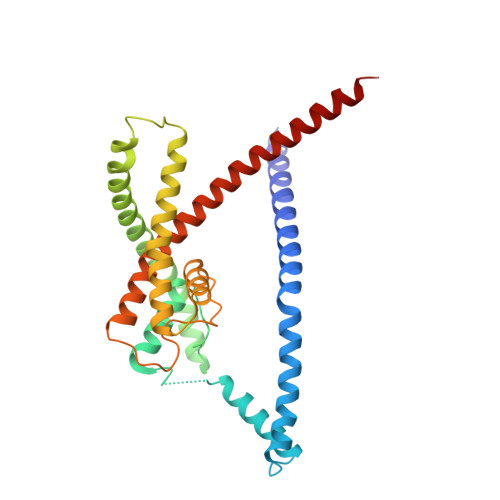Development of covalent chemogenetic K 2P channel activators.
Deal, P.E., Lee, H., Mondal, A., Lolicato, M., Mendonca, P.R.F., Black, H., Jang, S., El-Hilali, X., Bryant, C., Isacoff, E.Y., Renslo, A.R., Minor Jr., D.L.(2024) Cell Chem Biol 31: 1305-1323.e9
- PubMed: 39029456
- DOI: https://doi.org/10.1016/j.chembiol.2024.06.006
- Primary Citation of Related Structures:
8UE2, 8UE9, 8UEC, 8UF6 - PubMed Abstract:
K 2P potassium channels regulate excitability by affecting cellular resting membrane potential in the brain, cardiovascular system, immune cells, and sensory organs. Despite their important roles in anesthesia, arrhythmia, pain, hypertension, sleep, and migraine, the ability to control K 2P function remains limited. Here, we describe a chemogenetic strategy termed CATKLAMP (covalent activation of TREK family K + channels to clamp membrane potential) that leverages the discovery of a K 2P modulator pocket site that reacts with electrophile-bearing derivatives of a TREK subfamily small-molecule activator, ML335, to activate the channel irreversibly. We show that CATKLAMP can be used to probe fundamental aspects of K 2P function, as a switch to silence neuronal firing, and is applicable to all TREK subfamily members. Together, our findings exemplify a means to alter K 2P channel activity that should facilitate molecular and systems level studies of K 2P function and enable the search for new K 2P modulators.
- Cardiovascular Research Institute, University of California, San Francisco, San Francisco, CA 93858-2330, USA; Department of Pharmaceutical Chemistry, University of California, San Francisco, San Francisco, CA 93858-2330, USA.
Organizational Affiliation:





















